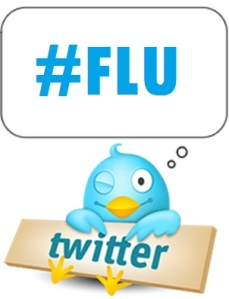Written by:
- Anita Barry, MD, MPH, Director, Infectious Disease Bureau at Boston Public Health Commission
- Craig Regis, MPH, Project Manager, Infectious Disease Bureau at Boston Public Health Commission
 Effective and timely communication with the public has always been a critical function of local public health departments. Whether it be alerting citizens to recent health events or distributing informative materials on disease prevention, risk communication requires public health practitioners to be on the forefront of the communication revolution.
Effective and timely communication with the public has always been a critical function of local public health departments. Whether it be alerting citizens to recent health events or distributing informative materials on disease prevention, risk communication requires public health practitioners to be on the forefront of the communication revolution.
Since the advent of the Internet, social media has revolutionized the way the public obtains information. Though certain populations still rely heavily on traditional media such as television, radio, and print, the technological advances have caused new information services to emerge. Social networking services such as Twitter and Facebook are widely used throughout the world, and more and more people are relying on them as their primary source for information. Smartphones are providing immediate, on-demand access to social networking services. As smartphone usage is higher among Black and Hispanic mobile phone users, social media also presents an opportunity to reach some vulnerable populations.1 In this new era of instant, crowd-sourced, mass communication, public health departments are using these new tools to quickly and effectively disseminate important information, especially in urgent situations where time is of the essence.
The Boston Public Health Commission (BPHC) was faced with such a situation in early 2013. By early January, Boston had seen over ten times as many reported influenza cases than in all of the 2011-12 season. The number of people going to emergency rooms and other healthcare sites for influenza like illness also markedly exceeded the prior season, creating a large burden on the healthcare system in the city, particularly the hospitals. The Mayor of Boston declared a public health emergency on Wednesday, January 9, 2013, in order to raise awareness and to mobilize the city’s resources, including encouraging health centers to hold free influenza vaccination clinics that following weekend (January 12-13, 2013).
BPHC was faced with the task of not only keeping an anxious public informed about best practices for influenza care and prevention, but also constantly assembling and circulating a rapidly changing schedule of free influenza vaccination clinics at neighborhood health centers in response to the emergency. No sooner was the interactive “flu calendar” updated than newly scheduled clinics required additional postings to BPHC’s public website. The dynamic, real-time nature of social media platforms made them the best method to keep the public adequately informed about a constantly evolving situation.
BPHC’s communication infrastructure includes Twitter with tweets in both English and Spanish, Facebook, YouTube, and a blog. BPHC’s twitter handle, @HealthyBoston, constantly tweeted updates, linked to factsheets, directed the public to the online calendar for vaccination clinics, and encouraged residents to be vaccinated. The campaign extended to BPHC’s Facebook page, which also provided a direct link to the clinic calendar. These platforms allowed for the swift response required during a public health crisis, and facilitated a surge in visitors to the BPHC website. The influenza section received over 20,000 hits in less than two weeks during the emergency. Over 80% of these hits were from new visitors, and over 16,000 were to check the clinic calendar. The response also resulted in an increase in Twitter followers. In weeks leading up to the flu emergency, @HealthyBoston averaged about 60 new followers per week, but gained over 600 new followers over the next month.
Social media played a pivotal role in keeping the public up to date about an ever-evolving situation with timely and accurate information. Currently, @HealthyBoston has nearly 11,000 Twitter followers, and over 3,000 Facebook “likes.” Recognizing the potential of social media to reach a younger audience, the BPHC Communications team launched a youth-oriented twitter handle last month called @WhatheHealth. Though it takes a dedicated staff and time to build momentum, utilizing social media in public health communications is worth the investment. It has the potential to increase the presence of an organization, broaden its audience, and revolutionize public health campaigns.
1Kellogg, Don. “Among Mobile Phone Users, Hispanics, Asians Are Most-Likely Smartphone Owners in the U.S.” Nielsenwire.com. N.p., 1 Feb. 2011. Web. 25 Feb. 2013.
Follow BPHC on Twitter @HealthyBoston and Facebook

